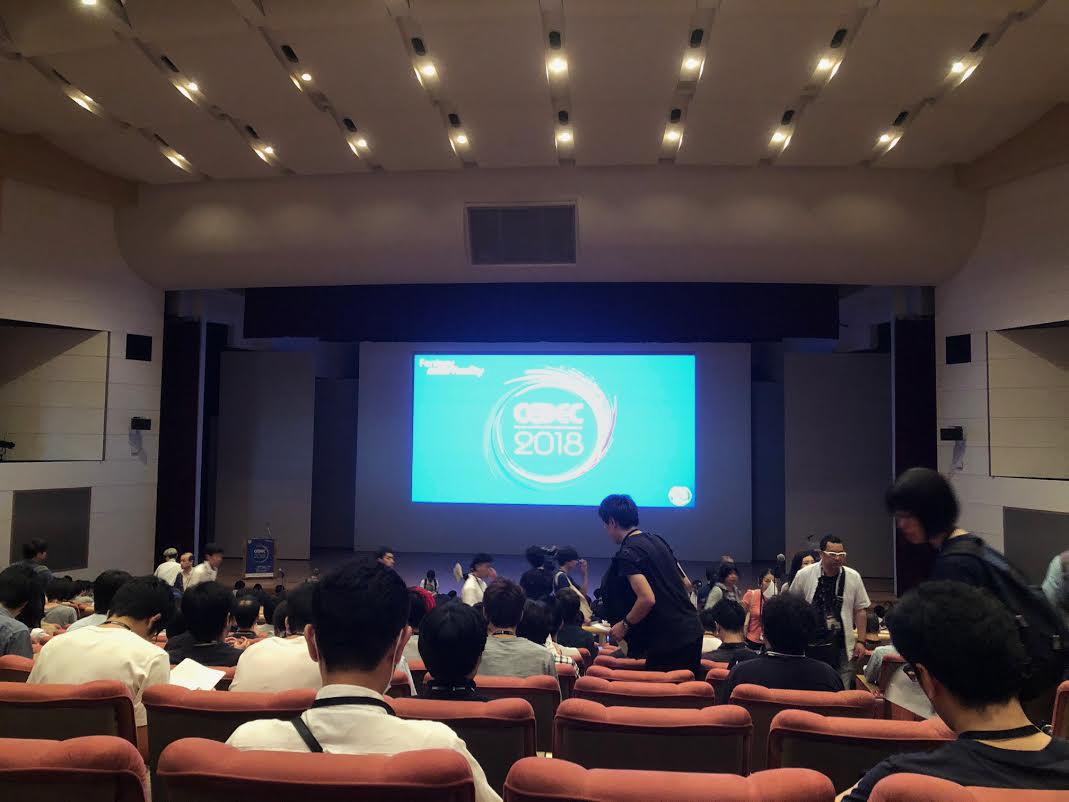【CEDEC 2018 シリーズ④】自動化やAI導入でゲーム運営はらくちんになる!?
*English translation below
運営プランナーのTAKAです。
前回はUniteの記事を書きましたが、今回はCEDECの記事を書かせていただいております。
CEDECは、ゲーム開発者向けの大規模な勉強会と言った感じのイベントで、今回は開催20周年目と言う節目の回。Uniteとは異なり完全にゲーム業界向けに特化されたイベントでした。
今回、1日目の基調講演にゲーム業界のレジェンド「宮本茂」氏の講演があるとのことで、非常に楽しみにしていました。
肝心の講演の内容については、様々なレポート記事をプロの方々が公開されているのでそちらをご覧頂ければと。
とはいえ、初っ端からスゴい方の貴重なお話を生で聞けて、自分の意識が少し高いところに登った感じにホクホクのまま、様々なセッションへと赴くことになりました。
CEDEC参加にあたり、機械学習や自動化を用いたゲーム運営の導入や実例に関するものを学ぶということを自分の主題にしておりました。ここでは、自分なりに思い考えているゲーム運営としての関わり合いについて、少々書かせていただきました。
スマホアプリにおけるゲーム運営では、非常に限られた時間の中でユーザーを飽きさせず楽しんでもらうため、様々なアップデートを常に考え追加していかなければなりません。週単位や場合によっては日単位でのアップデートが必要なこともあります。そんなアップデートでは、新たなキャラクターやアイテム、コンテンツ等が追加されていきます。その際、常に付きまとう問題としてあるのが、「ゲームバランス」の問題です。
新しく追加されたものが想定よりも弱かったり簡単だったりした場合は、まだ取り返すことも可能ですが、強すぎたり難しすぎた場合は、取り返しのつかない大事故に繋がってしまうことがあります。強すぎず弱すぎず、簡単すぎず難しすぎない、けれどもそれは決して平凡でありきたりなものではなく、魅力的であり面白いものでなければならない、という答えが一つではない無理難題に立ち向かうのが、ゲーム運営でありプランナーのお仕事でもあります。
そんな中で出てきた一つの答え(アイデア)に対して、考えた通り面白くてゲームバランス的にも問題ないものかどうかを確かめるため、実際にプレイして確認する「テストプレイ」を避けては通れません。
そしてそのテストプレイには、多くの時間が必要です。様々な状況やパターン、ゲームの規模によってそれはより複雑化していくため、確認すべき内容が膨大になるためです。
この「テストプレイ」は非常に重要なことではありますが、ここに時間をかけてしまっていては次の答えを考えることができず、限られた時間の中で多くの答えを出して応えて行かなければならないプランナーの仕事ととしては本末転倒になってしまいます。
解決方法の一つとしては、人海戦術で対応するというものがありますが、それでは非常に非効率的。そこで登場してくるのが「テストプレイ」の自動化やAIの導入となります。自動化やAIの導入により、効率的でさらに超スピーディーに回数をこなしてその結果を見ることができるようになります。もちろん面白さについては定量的に計ることは難しいですが、ゲームバランスに問題がないかどうかを見ることは容易にはなります。
しかし、一概に自動化やAIの導入といってもゲームによって仕組みや遊び方は異なるため簡単には行きません。
どのセッションにおいても、各ゲームタイトルに合わせてカスタマイズが必要であり、導入コストや時間がかかってしまう現実がより具体的に見えました。
※現状、こういったAIや機械学習に関する分野についてはどこも人手不足で、大手企業以外で独自開発、対応を行うのはなかなかに難しそうです。
ゲームの運営を長く続けていくのであれば、人海戦術で解決していくよりもコスパは良いのは確かではありますが、それが必ずしも成功したと言えるものになるかどうかは判りません。なぜなら、導入されたそれを使いこなし、高いクオリティを出していくためには、プランナーの役割というのがより重要になるからです。プランナー1人1人のクオリティが、よりダイレクトに現れてくるようになるためです。
結論、答え合わせは楽になる分、新たな答えを考え出さなければならないので、ゲーム運営が楽になるということはない、でした。
ただ、プランナーとして一番楽しいと思える「様々な答えを考える」ことに多くの時間を使えるようになるのは、楽になる以上の価値があるのではないかと思いました。
(TAKA)
【CEDEC 2018 Series④】Will bringing in AI and automation ease up management work for games!?
Hi, I’m Taka and I work here as a management planner.
I wrote about Unite in the last article this time I had the opportunity to write a piece on CEDEC.
CEDEC is an event that basically feels like a large-scale study group for game developers. This particular occasion marked a landmark 20-year anniversary for the event as well. Unlike Unite, this event was focused solely on the gaming industry.
It was extremely exciting coming into this year’s event since the first day featured a keynote presented by gaming industry legend, Shigeru Miyamoto.
The major points delivered in his presentation have already been covered by the media, so you should check them out if you’re interested.
However, I will say that right from the start, it was deeply thrilling for me to hear such extraordinary ideas firsthand from an awe-inspiring figure like Miyamoto. From then on, that excitement stuck with me as I went and checked out the other sessions held at the event.
As a participant at CEDEC one of my main interests was taking a practical look at how machine learning and automation can be used for managing game development as someone who has a role in management work for games, I wrote a little bit on this topic from my own perspective.
Managing projects for mobile games requires you to constantly focus on adding different updates that can maintain users’ interest in a very small window of time. In some cases it’s essential to have weekly updates, or daily updates depending on the situation. These sorts of updates add new characters, items, and other content to the game. Although, one issue that constantly plagues this process is the problem of “game balance.”
If a new addition to a game happens to be weaker or simpler than expected, then in some cases it’s still possible to reverse these effects. However, if something is too strong or too difficult, then it might lead to an irreversible disaster. You have to ensure that nothing is too strong or too weak. Likewise, nothing can be too simplistic or too difficult. New content should be fun and enticing, and it should never come off as plain and mediocre. Unfortunately, there is no single “catch-all” solution when it comes to pulling off extremely difficult work like this. Planners like me in the gaming industry have to deal with these issues head-on.
One such solution is to never skip out on what’s called a “playtest”. It is when you take a hands-on approach and play the game to identify whether or not there are any balancing issues, as well as to make sure the game is just as fun as originally planned.
Therefore, it’s absolutely crucial to dedicate lots of time to playtesting. The game’s scale, as well as the different conditions and patterns, can make this process even more complicated, and drastically increase the amount of content that needs to be checked over.
While playtesting is exceptionally crucial, it is impossible to think about the next solution when you sink all of your time into it. It becomes a case of misplaced priorities for planners, who have to take it upon themselves to offer a lot of solutions and respond in a short amount of time.
One way of solving this is to throw all of the manpower you have to tackle the task at hand, but this proves to be extremely inefficient. So, AI and automation tools for playtesting are coming out to address these issues. By introducing automation and AI, you can speed up and optimize the process considerably in order to see results. As you would expect, it’s difficult to measure fun in any quantitative sort of way. But nonetheless, these tools make it easier to check and see if there are any issues, in terms of game balancing.
However, it’s not as simple as just introducing AI and automation and letting it take off from there, because things like structure and playstyle are going to be different from game to game.
No matter which session I was attending, everything had to be customized according to each specific game title. With that, I was able to get a better picture of how much time it takes, and how much it costs to bring in this type of technology.
*Right now, there seems to be a shortage of people working on this type of AI and machine learning, so carrying out independent development and support is very hard for anyone outside of a major corporation.
If management work on a game is continuing on for a lengthy amount of time, then these tools are almost certainly a more cost effective solution than throwing sheer manpower at the project. But it can be difficult to know with any certainty if everything actually works successfully. This is because the role of a planner takes on even more importance in order to master these tools and deliver a high level of quality. This also means that the quality of each planner comes through more directly.
In the end, all these factors do not ease up project management for games. As it becomes easier to find solutions, it also becomes essential to contemplate newer solutions on top of that.
But, it did cross my mind that perhaps finding a way to take more time and think about different solutions is a much greater joy to planners like me than finding ways to make our work easier.
(TAKA)



